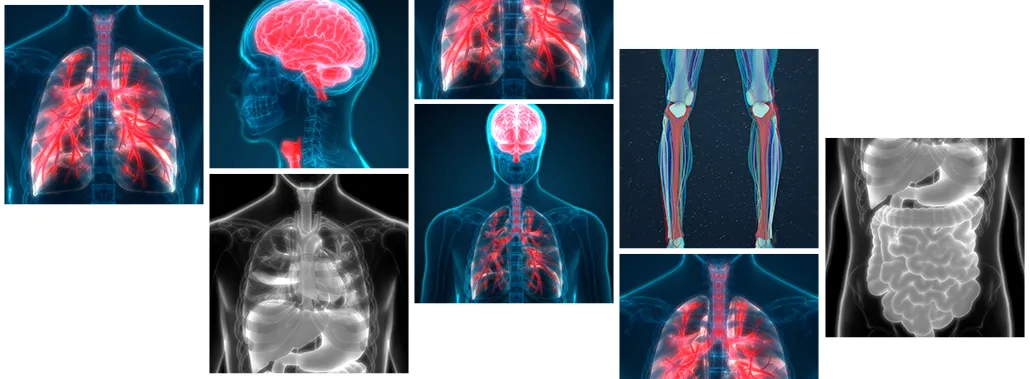
If you have ever undergone medical imaging, such as an MRI or CT scan, chances are superior that your conventional contrast.
If you have ever undergone medical imaging, such as an MRI or CT scan, chances are superior that your conventional contrast.
MRIs (magnetic resonance imaging) and CT (computed tomography) are types of medical paraphernalia that create a representation of internal organs and structures. Contrast material augments and improves the eminence of these images. Contrast material can also perk up the quality of some ultrasound and x-rays. In many cases, the use of contrast can aid the radiologist to differentiate normal from abnormal conditions.
Contrast material works by temporarily changing the way the imaging machine interacts with the body. Some types of contrast also slows down x-ray lights. Other categories of contrast temporarily takes hold on the magnetic properties of certain atoms inside your body.
Contrast materials make definite body tissues and structures emerge differently on the images than they would devoid of the contrast. The materials help "contrast," or differentiate precise areas of the body from the adjacent tissue. Contrast materials perk up the visibility of blood vessels, tissues, and specific organs to facilitate doctors in diagnosing medical conditions.
Types of Contrast
There are numerous diverse types of contrast materials, and each works in a diverse way.
Barium-sulfate and iodine-based compounds, for use in x-ray and CT imaging scans
Contrast materials can take in components that have a chemical configuration that includes iodine, which is a logically occurring chemical element. This category of contrast is injected into blood vessels, in the fluid spaces of the spine or contained by the rubbery discs that mitigate the bones of the spine, and into other body cavities.
Barium-sulfate compounds are the most frequent contrast materials administered orally, but they can also be administered rectally. Barium-sulfate compounds are accessible in numerous forms, including powder that is assorted with water before administration, liquid, paste, and tablet.
X-rays and CTs work by transiting x-ray beams through your body to an x-ray detector, which absorbs the x-rays to generate an image. Depending on their compactness, your bones and body tissues can also take up the x-ray to slow the beam down or stop it totally. In this way, the x-ray beams form "shadows" that symbolize the tissues and organs on the images.
Iodine-based and barium-sulfate contrast materials bound or block the x-rays' aptitude to pass through the tissue. This changes how the blood vessels, organs, and other body tissues containing the iodine-based or barium-sulfate compounds come into view in the x-ray or CT pictures.
Doctors typically demand the oral administration of barium-sulfate contrast materials to augment x-ray and CT pictures of the gastrointestinal tract, counting the pharynx and esophagus, stomach, small intestine, or large intestine, also known as the colon. Physicians typically arrange rectal administration of barium-sulfate contrast to augment x-ray and CT scans of the small intestine and colon. Clinicians arrange the intravenous injection of iodine-based contrast to add to x-ray and CT images of inside organs, such as the heart and lungs, gastrointestinal tract, arteries and veins, the brain, breast tissue, and squashy tissues of the body, such as muscles and fat.
Gadolinium
Gadolinium is the key constituent in the mainly normally used MRI contrast material. MRIs use influential magnets that have an effect on protons, which are parts of a proton that have a constructive electrical charge. Protons are continually spinning, but frequently diverse rates and angles, depending on a mixture of properties of the tissue; in other words, protons in a fit bit of tissue might spin in your own way than do the protons of unhealthy tissue. The magnetic field causes the protons to spin out of symmetry. When the magnetic field is curved off, the protons realign with the magnetic field at diverse rates, depending on the category of tissue; they also liberate diverse amounts of energy, depending on tissue type.
Gadolinium modifies the magnetic chattels of water molecules to augment the speed at which protons realign with the compelling field; the quicker the protons, the brighter the representation.
Doctors order the intravenous jab of gadolinium to boost MRI images of inside organs, gastrointestinal tract, blood vessels, the brain, breast tissue, and squashy tissues of the body.
Saline (saltwater) and air also make superior contrast materials in imaging exams. Ultrasound imaging, especially ultrasound imaging of the heart, may use microbubbles and microspheres that aid organs and tissues to come into view brighter on ultrasound. These contrast materials are appropriate for assessing how well blood moves through organs, perceiving blood clots, finding aberration in the heart, and detecting masses in the liver or kidney.









